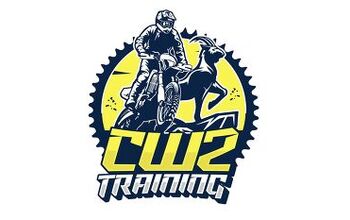New Rider: How To Take A Sharp Turn From A Stop

Begin riding like a pro
Have you ever seen a rider who pulls away from a curb, crosses one (or two!) lanes of traffic before easing his way back into the right-hand lane that he originally pulled out into. You know what he was when pulling across traffic and then back into the right lane? A target. Although this is a skill that is so basic that it is taught in motorcycle safety courses, we’ve seen enough near misses that we believe many riders do not know how to make a sharp turn from a stop. Hopefully, this article will do a small bit to help remedy this problem.
New Rider: What Is The Friction Zone?
The best place to practice this maneuver is in an empty parking lot. You can use the lines for the parking spaces to demarcate the lane you’re trying to stay within
You don’t want to practice this exercise on a street. Go to an empty parking lot and use the parking space lines to stand in for your parking spot and the lane you want to pull into. Just start with your rear tire on perpendicular to the line as you would with the curb. That way, if you run wide, you don’t risk running into opposing traffic. Don’t be surprised if it takes you a while to master this task. It is a fairly complex mix of clutch and throttle management plus body position while the bike is at its least balanced state.

Like most of the best happenings in his life, Evans stumbled into his motojournalism career. While on his way to a planned life in academia, he applied for a job at a motorcycle magazine, thinking he’d get the opportunity to write some freelance articles. Instead, he was offered a full-time job in which he discovered he could actually get paid to ride other people’s motorcycles – and he’s never looked back. Over the 25 years he’s been in the motorcycle industry, Evans has written two books, 101 Sportbike Performance Projects and How to Modify Your Metric Cruiser, and has ridden just about every production motorcycle manufactured. Evans has a deep love of motorcycles and believes they are a force for good in the world.
More by Evans Brasfield



































Comments
Join the conversation
A more important skill would be how to back your bike into a narrow spot at the curb between two bikes without hitting either one and still have space to get off your bike. These pictures show a curb with no other bikes but usually there is a long row of bikes at the curb and you have to find a spot you can fit into. Otherwise you could just park in a car parking spot and avoid this problem altogether.
Having been a rider coach myself, I do recall get your feet up when you are moving. The sure-fire way to ID a marginally competent rider is the person who drops their feet like landing gear on a 747 a mile away from stopping, and on the reverse side drags their feet when moving and stable. Can I say this? It's embarrassing to see. A little experience on a dirt bike really helps.
I have also seen a guy veer into an oncoming traffic left turn lane because he had no idea how to stay where he intended. I spoke with the guy afterwards. He thought I was speaking about another screwup he had made and had no recollection of what he had done in this case. He would have if a car had been in the place he put his bike. And he supposedly had ridden this GS from the east coast to California. Scary. This is not so difficult, look where you want to go, get some movement and everything else follows. If you don't know how to do that, practice practice practice.
Feet should come up once you are moving, not before, but not 300 feet later either.
Is this really so difficult? Folks having trouble with it are clearly not comfortable with the sense of a weighty object that they are astride and need to practice practice until they are.